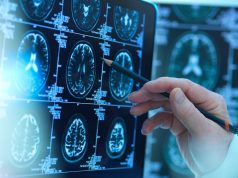Evidence suggests rejecting the hypothesis that the rate of shootings remained unchanged after 1996
WEDNESDAY, March 14, 2018 (HealthDay News) — Evidence suggests rejecting the hypothesis that the rate of mass shootings remained unchanged after implementation of the 1996 National Firearms Agreement in Australia, according to a research letter published online March 13 in the Annals of Internal Medicine.
Simon Chapman, Ph.D., from the University of Sydney, and colleagues modeled the occurrence of mass shootings over time using a rare events model to examine whether the rate of mass shootings remained unchanged after introduction of the National Firearms Agreement, banning semiautomatic rifles, in 1996. The period before legislation was defined as January 1979 to June 1996 and the period after legislation was July 1996 to February 2018 (210 and 260 months, respectively).
The researchers found that there was strong evidence indicating a structural change in 1996 under the standard Poisson process model. In a conservative two-sided likelihood ratio test for a changepoint in a Poisson process model, the P value was less than 0.001, strongly suggesting that the null hypothesis that the rate of mass shootings did not change after the legislation should be rejected. Approximately three mass shootings took place every four years before 1996; approximately 16 incidents would have been expected by February 2018 had they continued at this rate.
“Without a 22-year randomized controlled trial assigning only parts of a national population to live under the National Firearms Agreement, establishing a definitive causal connection between this legislation and the 22-year absence of mass firearm homicides is not possible,” the authors write. “A standard rare events model provides strong evidence against the hypothesis that this prolonged absence simply reflects a continuation of a preexisting pattern of rare events.”
Copyright © 2018 HealthDay. All rights reserved.








